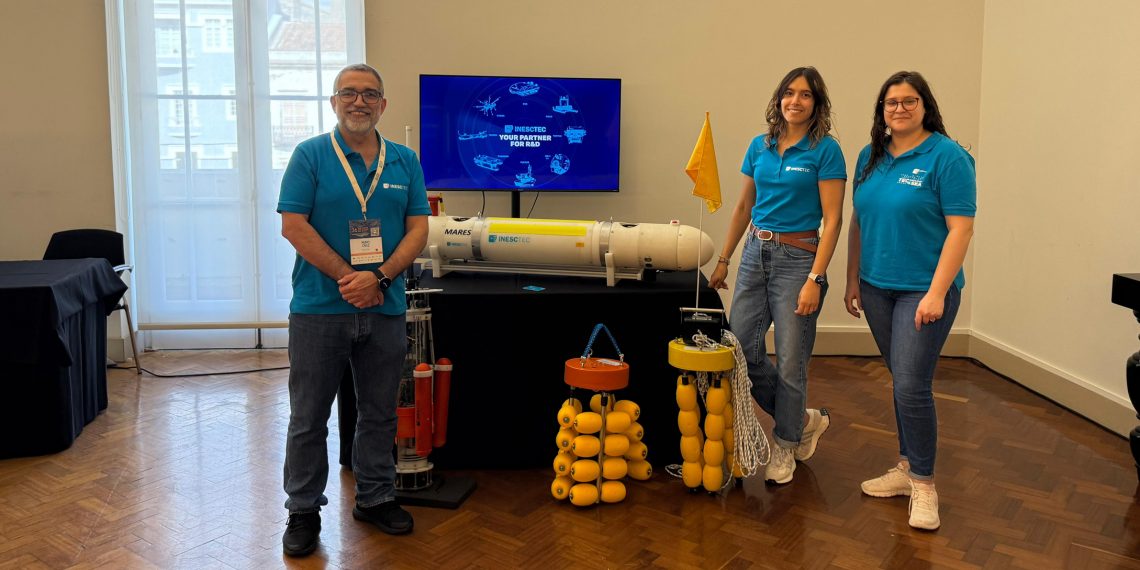INESC TEC participated in the 36th edition of the European Cetacean Society conference (ECS), one of Europe’s leading events dedicated to the study and preservation of cetaceans; this year’s edition took place in Ponta Delgada, in the Azores.
Over the course of three days, INESC TEC presented work in underwater acoustic monitoring, as well as the technological solutions the Institute has developed to support scientific research in marine environments.
The participation in the conference follows a successful pilot-project carried out off the coast of the Azores, in October 2024. During this endeavour, the team deployed a monitoring system using buoys equipped with acoustic sensors, capable of detecting sound signals emitted by cetaceans. The project generated a large volume of recordings, which are still under analysis, but have already confirmed the significant presence of these animals in the region. The data has been handed over to researchers at the University of the Azores, who are now testing automatic sound detection methods using purpose-built algorithms.
“Our presence at the conference was a strategic opportunity to share our knowledge, demonstrate our technological capabilities, and reinforce ties with the scientific community dedicated to cetacean research,” said Nuno Cruz, INESC TEC researcher and coordinator of the robotics and autonomous systems area.
At the conference stand, INESC TEC showcased the buoys used in the Azores mission and the MARES autonomous underwater vehicle, which generated considerable interest among attending scientists. “Many participants were unaware of the potential of triangulation and acoustic detection, and were particularly impressed by the degree of technological customisation INESC TEC can provide,” the researcher added.
In addition to recording underwater sounds, the autonomous vehicles proved to be highly effective tools for gathering environmental data like water temperature, seabed morphology, and the presence of fish shoals – factors that can be key to understanding patterns of cetacean behaviour and presence considering their environment.
“Our goal was to demonstrate that we can adapt technology to meet the specific needs of the scientific community – whether that’s recording sounds, collecting environmental data, or supporting missions in remote or hard-to-reach areas,” Nuno Cruz emphasised.
By participating in this event, INESC TEC strengthened the role in marine research through the application of advanced technologies, contributing to new approaches in the study and conservation of cetaceans and paving the way for future national and international collaborations in this field.
The researcher mentioned in this news piece is associated with INESC TEC and the Faculty of Engineering of the University of Porto (FEUP)



 News, current topics, curiosities and so much more about INESC TEC and its community!
News, current topics, curiosities and so much more about INESC TEC and its community!